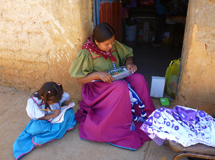Syracuse Views Summer 2025
We want to know how you experience Syracuse University. Take a photo and share it with us. We select photos from a variety of sources. Submit photos of your University experience by sending them directly to Syracuse University News at…

 Some students take on internships to learn what work in the “real world” will be like after graduation. Others get involved in projects in order to learn how to make their post-graduation world more like they want it to be. Audrey Thompson and Tejal Kuray are definitely in the second category.
Some students take on internships to learn what work in the “real world” will be like after graduation. Others get involved in projects in order to learn how to make their post-graduation world more like they want it to be. Audrey Thompson and Tejal Kuray are definitely in the second category.